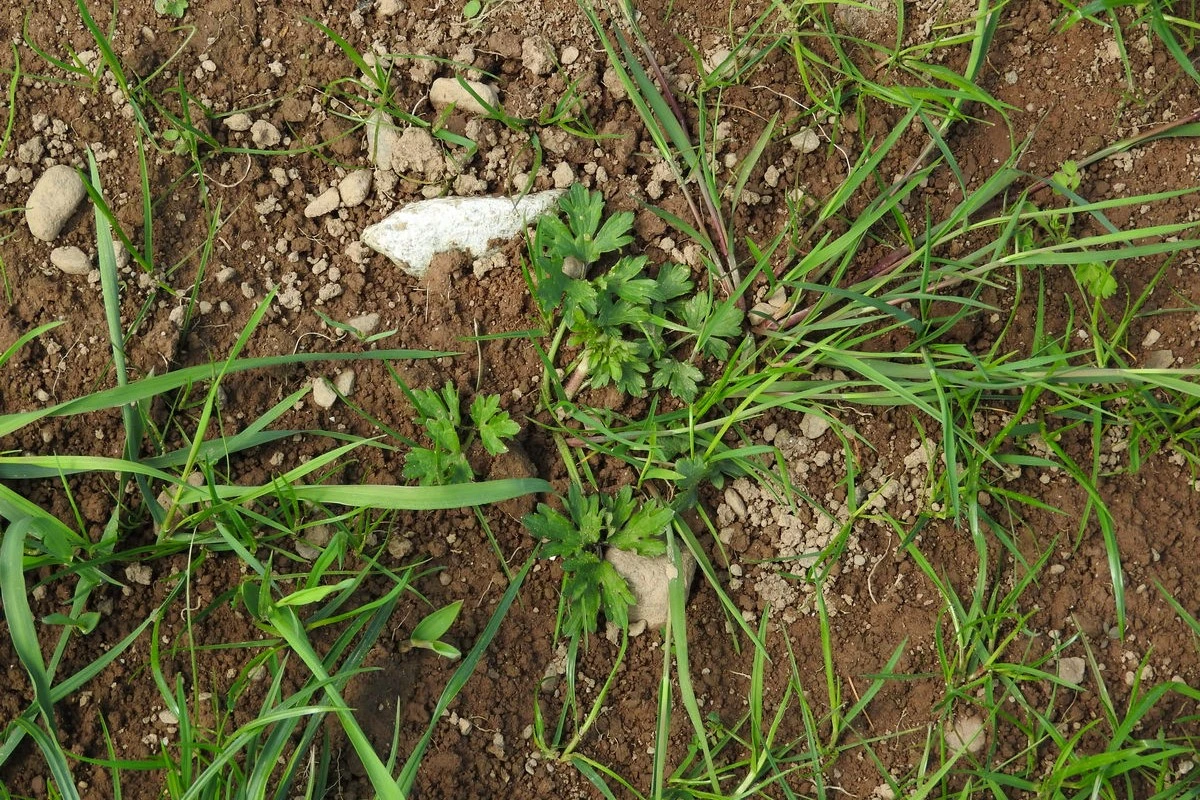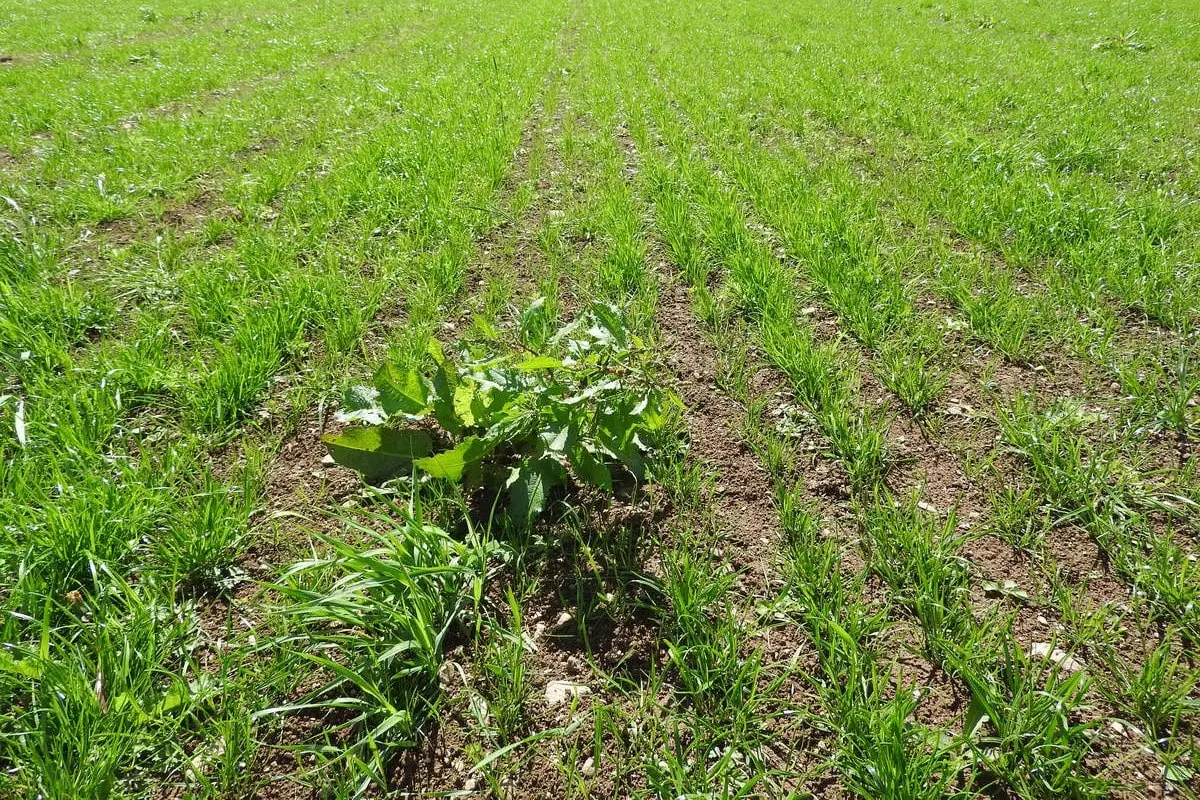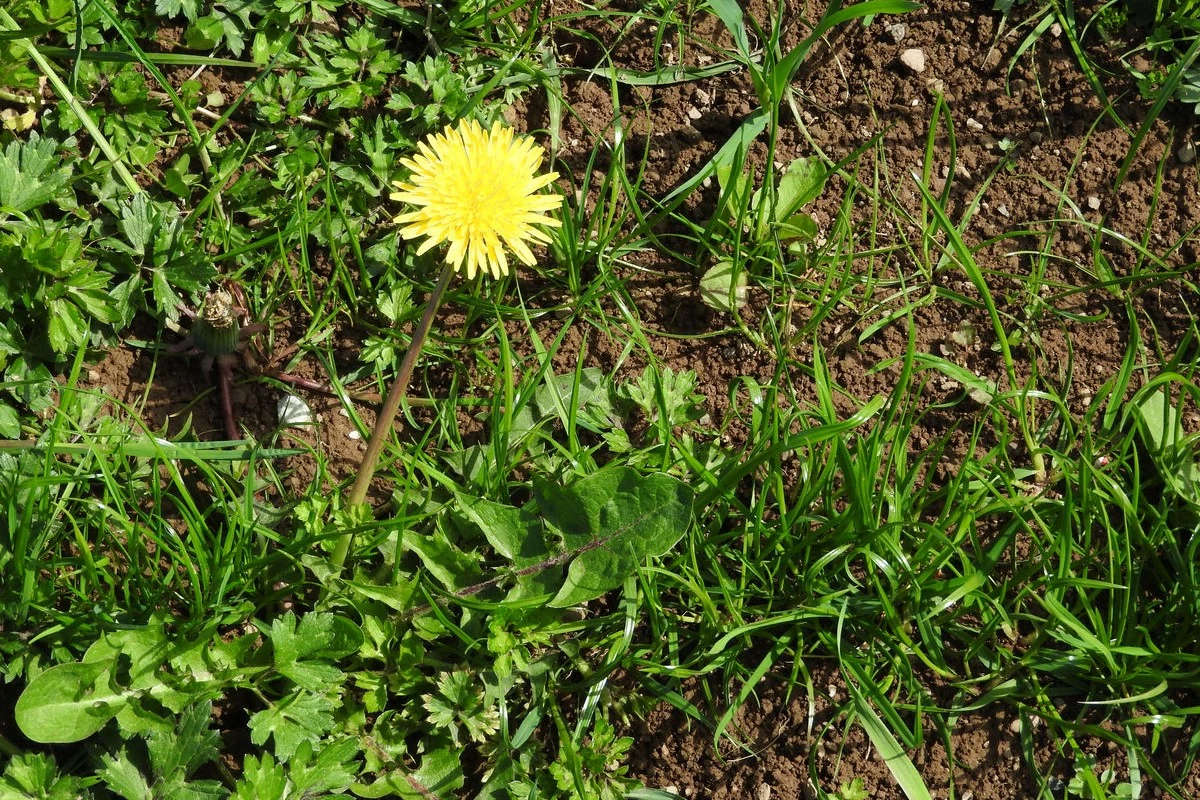Everything matters in production and Germinal understands that weed control plays a key role in the productivity of grassland farming. Below, we will identify the most common grassland weeds and discuss options for their control, to minimise your loss in productive pasture performance.
The importance of weed control in livestock farming
Weeds compete with your crops for nutrients, light and water, grassland weed control is key to producing high-quality grass and forage for livestock. This competition mitigates your crops’ ability to achieve their full yield potential and may negatively affect subsequent crops.
Weeds don’t just reduce the grazing area available for livestock, but they can also pose a threat to grazing livestock. Noxious weeds such as thistles can become an issue if left uncontrolled, spreading diseases in sheep, while ragwort is toxic and a danger to all stock.
Grassland weed control through both chemical and mechanical means will minimise the chance of common weeds establishing and becoming a risk to your livestock.
Most common weeds in farming
Buttercups
Buttercups are a perennial weed thriving in wet soils where drainage and soil fertility are poor. Once established, buttercup control in pastures is vital as they have the potential to restrict grass growth by leaching the nutrients present in the soil, resulting in reduced grass yields.
Creeping buttercup rapidly spreads with runners or rhizomes across the ground, while meadow and bulbous buttercup do not have runners. Buttercup is rarely grazed by livestock.

Chickweed
An annual plant and the most common weed in grassland farming systems, Chickweed is fast-growing. Establishing quickly, it competes with grass and forage, causing significant losses in yield, which is a major issue in reseeds.
Common chickweed has a smooth leaf and mouse-eared chickweed has a hairy leaf and stem. They can be problematic in autumn reseeds as chickweed can grow at cooler temperatures than grass or clovers. Control is important as it can smother patches of grass.
Dandelions
A perennial weed with a deep taproot, dandelions are primarily spread by seed. If not effectively controlled, it will compete with grass and lower the overall quality of your pasture.
Docks
With mature plants potentially producing up to 60,000 seeds per year, docks pose a long-term threat to productive and sustainable grasslands.
For effective dock control, avoid poaching and over-grazing as they can create space for dock infestations. Docks only provide 65% of the feed value of grass from the same area, so they must be replaced with more productive grass and forage.

Nettles
Nettle control is important due to this perennial weed’s ability to grow in clumps and spread throughout pastures, reducing the overall grazing area.
Ragwort
Common ragwort is a toxic biennial plant dispersed by seed and root systems. Flowering from June to November, in its second year, it is a danger to all stock and will normally not be grazed by animals unless grazing options are severely limited. It is vital to ensure common ragwort is not present in silage as it may cause serious issues and even death to stock.
After spraying, animals should not have access to pastures which contain ragwort, as it becomes more palatable but remains toxic. Animals should be excluded until ragwort has fully decayed.
Thistles
Creeping thistle is an upright perennial weed that grows mainly from an underground stem or rhizome. Due to an extensive underground root structure, creeping thistle competes aggressively with grass and significant losses in yield can be experienced. Thistles can also diminish your grazing platform.
Like ragwort, spear thistle is a biennial plant that persists for two years. Producing a rosette of leaves in year one, it expands with a flowering shoot in year two. Spear thistle is particularly troublesome in its second year, as it reproduces from seeds, which have little dormancy and germinate in autumn or spring. One plant can produce 8,000 seeds, thus it vigorously threatens the productivity of grassland pastures.
Mechanical weed control
As we move towards a more sustainable future, options such as mechanical weed control are becoming more popular, especially where weed levels are relatively low.
Topping
Topping prevents the spread of grassland weeds by making their growth less vigorous and reducing their competitiveness in the sward. This is most effective when used to remove flower heads and the upper leaves in dense areas of thistles, docks and nettles before the buds open.
When topping, it is vital to top again one month after the initial treatment to prevent weeds from flowering and to repeat this process for up to three years to weaken weeds’ roots. If possible, the topped cuttings should be removed to ensure growing plants are not smothered and nutrient enrichment is avoided.
Remember to exclude animals from pastures containing toxic weeds until the topped plant has fully decayed and broken down into the soil.
Pulling or digging
This is when the entire root of the weed is taken from the ground, ensuring regrowth is not possible. Pulling or digging are obviously time-consuming, and generally only possible in small areas or where levels of infestation are relatively small.
If ragwort is present, pull it out before it begins to seed. Take care reintroducing livestock after pulling has occurred as dead plants and regrowth are very palatable.
Using herbicides for weed control
Grassland weed control in new swards
Carefully check reseeds for weeds due to soil cultivation potentially disturbing weed seedbanks. To control weeds in reseeds, it is best to apply treatment when the grass is at the two-to-three-leaf stage.
In reseeds, the control of grassland weeds such as docks, thistles, and chickweed is much more effective at the seedling stage. When applying herbicides to a new sward, it is vital that product choice is carefully considered.

Help the spray work
- Have an even, vigorously growing sward.
- Apply the herbicide onto small, actively growing weeds (e.g. dock leaf = size of €2 coin).
- Spray six to eight weeks after reseeding when there are three leaves on the grass and one true leaf on the clover.
- Avoid spraying in very dry or cold conditions or when rain is forecast (talk to your advisor or merchant if unsure).
- Follow the label recommendations for water-to-chemical ratios. Using the higher recommended rate of water is generally best.
- Remember to keep the prescribed cross-compliance records and follow the product label.
Recommended herbicides for weed control in new swards
| Herbicide name | Clover-safe? | Rate/ha | Water Volume | Herbicide application advice | Notes |
| Clovermax DB Plus | Yes | 7 L/ha | Controls moderate levels of docks, thistles and most annual weeds. Needs small actively growing weeds for best effect. Apply after two-leaf stage of grass and from one-leaf clover stage. | Emergency use allowed in 2023 from 2nd June to 30th September 2023, not permitted outside this time. | |
| Binder, Hurler, | No | 0.75 L/ha | 200-400 L/ha | Cleavers, common chickweed, field forget-me-not, black bindweed, dock and common nettle. | Grasses should have at least 3 fully expanded leaves. |
| PastorTrio | No | 1.0 L/ha | 200-400 L/ha | Chickweed, buttercups, docks, thistles, daisies, dandelions. |
Established grassland
In Ireland, the most common weeds in established grassland are docks, thistles, nettles, chickweed, buttercup and ragwort. When using agricultural herbicides, follow these steps:
- Always adhere to the label recommendations for usage rate and water volume before use.
- Avoid spraying when waterlogged, drought stress or cold stress.
- Ensure weeds are growing actively with healthy leaves for successful control.
- Consider watercourses, weather, and weed health before spaying agricultural herbicides.
- Cutting or grazing restrictions may need to be extended to allow for poisonous weeds such as ragwort.
- Keep prescribed cross-compliance records.
- Use the appropriate spray for the weeds you are targeting.
- Adhere to label recommendations for grazing and cutting withdrawal periods.
Recommended herbicides for weed control in established grassland
| Grassland weeds | Herbicide solution | Application rate/ha | Grazing interval | Clover Safe? | Water volume | Herbicide application advice |
| Docks | Eagle | 40-60 g/ha | 7 days | Yes | 200-400 L/ha | Do not harvest for hay or silage for 21 days after spraying. |
| Docks & Chickweed | Doxstar Pro | 2.0 L/ha | 7 days | No | 300-400 L/ha | Do not cut for 28 days after application. |
| Docks, thistles, nettles, chickweedbuttercups, dandelions, ragwort | Forefront T | 2.0 L/ha | 7 days | No | 200-300 L/ha | Use on grazing ground only. |
| Thistles, nettles | Thislex | 1.0 L/ha | 7 days | No | 200-400 L/ha | Do not cut silage for three weeks after application. |
Grassland weed control advice
For advice on how to control grassland weeds while producing high-quality grass and forage, ask a Germinal expert.
